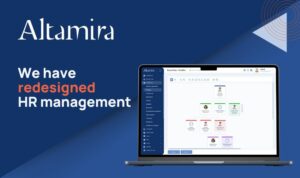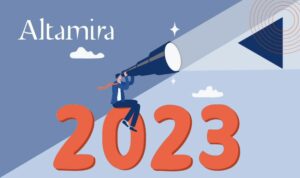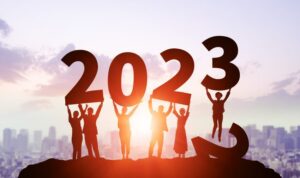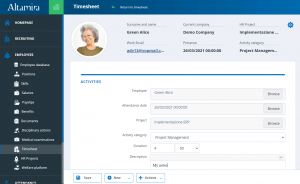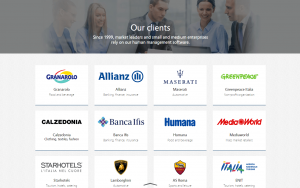OKRs – “Objectives and Key Results” are being used by some of the world’s leading organizations for years now. The aim behind setting up OKRs is to increase “employee-company” vision alignment, foster transparency, and encourage a focused and streamlined approach towards goal attainment.
Corporate giants like Adobe, Google, Netflix, and many more are known for their successful implementation of OKRs. If organizations are looking to improve performance at every level of their business, then OKRs may just be the way to make this happen.
So how can we define OKRs?
OKR is a methodology used by companies to ensure company-wide alignment to the corporate goals & strategies. The development of OKRs is attributed to Andrew Grove, former President and CEO of Intel, also known as the “Father of OKRs”. He introduced this approach at Intel as a method to achieve measurable goals through company-wide alignment, agility, and transparency.
An OKR is like a performance management framework that can be assigned to an individual, a team, or a company. OKRs comprise of a concrete, clearly defined, actionable goal with 3 to 5 key results defining “how” the goal is to be achieved.
The aim of OKRs is to define how to achieve objectives through specific, definite, and tangible actions. The objective is a goal that is to be achieved, while the key results measure the progress made towards achieving that objective.
OKRs may be shared with employees across the organization in order to provide them with visibility towards the goals that are set and align their effort towards targeted goal achievement.
We’ll look at a couple of few examples here:
Example 1
Objective: Advance & Grow the business
Key results:
- Grow revenue to $4M.
- Launch the new product line.
- Reduce churn to <6% annually through improved customer satisfaction.
Example 2
Objective: Build a great corporate culture & engage employees better
Key results:
- Launch an Employee Engagement Survey to identify the top engagement indicators & problem areas.
- Achieve Employee Net Promoter Score of +20.
- Conduct team-building workshops.
- Leaders to launch Town Hall and open forums for employees.
- Set up regular “coffee hour” sessions with teams.
Why is OKRs trending? – Benefits
There’s a reason why major organizations are using the OKRs model and achieving greater success. The objective and key results model is a powerful and efficient way to express and also realize organizational goals. It helps build a concrete mission, elevates employee engagement, and helps set a pathway towards the ultimate mission of a company.
OKRs help organize teams and their day-to-day work around achieving common objectives. This, in turn, brings several benefits to organizations such as increased transparency, improved focus, and better alignment. Because of the emphasis it lays on time and measurable indicators, OKR methodology is based on reality.
Here’s why well-known companies are using OKRs and how they can be useful for you.
1. Alignment to corporate goals
It’s important that your employees realize how their work is connected and aligned to their company’s overall vision. When goals are shared throughout the organization, you’ll have the transparency you need so every employee feels connected and invested in the business.
Once the OKRs are set, the employees across the hierarchy are able to align their day-to-day activities to the organization’s company-wide vision. If teams and individuals have a clear view of their goals and how they align with the company’s goals, they’ll stay more focused on the work that matters most to the business.
According to the Harvard Business Review, companies with highly-aligned employees are over twice as likely to be top performers.
2. Regular track of progress
The OKRs are linked to specific timelines and are generally reviewed on a weekly or biweekly basis. Discussing goals on an ongoing basis keeps teams focused on progress, allows them to be flexible, and brings in a change of action at the right time, as and when required.
Tracking progress from output to outcome is what makes OKRs a popular choice among progressive organizations. Through regular check-ins and status updates, teams remain focused on the big picture, ensuring each conversation ends with a clear action plan.
OKRs get you those quick and definite reference points to peruse your current plans. It helps address questions like – Are you and your team on track to meet a specific objective or not? Why so or why not?
3. Increased focus & productivity
The system of setting an actionable goal with 3 to 5 key results really fosters focus, efficiency, and productivity. When the daily work plans of employees revolve around certain core business objectives, they are clearly aware of what they should be doing and when.
OKRs help employees stay focused and better prioritize their time to what matters the most.
OKRs offer clarity around the measurement of success and set time-bound realization of goals. This is what sets them apart from other goal-setting mechanisms. OKRs are able to bring to the table goals that are crucial and can really make a real difference vis-à-vis the less pressing ones. By building definite OKRs, managers give their teams a compass to follow and a benchmark for performance evaluation.
Additionally, OKRs provide an overview on areas where employees require more support, extra resources, thus improving resources management further.
OKRs also enable informed & prompt decision-making. With regular progress tracking, leaders can get a better insight into learning and development issues and take decisions accordingly.
4. Better transparency & teamwork
With OKRs in place, organizational goals are available for everyone to see, creating better transparency & collaboration between teams and departments.
When team members know each other’s priorities, action plans, etc., they are more in sync and can work together to make sure the required work gets done at the right time.
The OKR methodology allows employees and their leaders to work cohesively as a unit to achieve larger goals.
5. Elevated employee engagement & commitment
Employee engagement is one of the most crucial factors for organizational success. If organizations do not keep their teams engaged on regular basis, they may start to feel disconnected and distracted.
The OKR framework lets individuals see how their work is directly connected to the company’s ultimate mission & vision, giving a sense of purpose and direction to their efforts.
When individuals realize how their work-contribution impacts the broader goals of the business, they are likely to feel more committed, motivated, and engaged with their work.
Common problems/mistakes to avoid while writing OKRs
- Setting up objectives that are either too challenging or not challenging enough. OKRs should be ambitious, but not too difficult to achieve, else you’ll end up demotivating people.
- OKRs taking a back seat. OKRs need to be discussed and reviewed regularly to achieve results.
- Not making the results measurable. Your key results need to be numeric.
- Setting way too many objectives. Remember the “3-5 key results per objective” rule.
- Forgetting the big picture. OKRs are part of a larger picture that brings strategy & execution together and align these to an organization’s value system and vision.
Writing effective OKRs – how can you make OKRs work for you?
OKR methodology is a way to articulate exactly what is needed and by when, in order to execute your strategy and realize your mission. Therefore, if organizations really want OKRs to prove useful for them, there are a couple of factors to keep in mind.
- OKRs is a method to reach ambitious targets and achieve them, using them as a sole and direct measure of performance may demotivate your employees.
- The key is to make the entire OKRs-setting exercise inclusive. Include people who will eventually be executing OKRs into the drafting process too. Organizations should have all the relevant people involved to discuss and propose changes. This will help draft valid OKRs and also keep the teams engaged.
- Rome wasn’t built in a day. OKRs will strategize what you will be doing say for the next quarter. Therefore, take your time to draft your OKRs. If you do not have the right direction in the first place or if these are wrongly drafted, you will not be able to achieve the right objectives. Organizations cannot afford to have ambiguity when it comes to laying down crucial goals.
- Validate the link between objective and key results. Managers should ask themselves if all the set key results are necessary to achieve the ultimate objective. If the answer is yes, great. If it’s no, then they should continue to refine these to make them more relevant and measurable.
Conclusion
To conclude, let us do a quick recap of the benefits of Objectives and Key Results. The OKR methodology:
- Provides a clear direction to both employees and managers.
- Helps maximize productivity and efficiency among teams across the organization.
- Increases the team’s ability to take strategic decisions.
- Allows employees to see the big picture and align their work with the company’s overall vision, strategy, & priorities.
- Makes employees feel more connected with their organization and boosts employee motivation and engagement.
- Helps build cohesive teams across departments.
Companies are always looking for new ways to set goals, drive performance, boost results. OKRs help them align, connect and engage their team members better to the organization’s goals. They enable an organization to focus on the “what”, “how” and “why” of its goals.
If you want to drive business success, employee engagement, employee productivity, and performance at every level in your organization, the OKR methodology is one of the best framework for you.
Written by Garima Sharma

Lead – Talent Assessments & Employee Engagement at GreenThumbs.
Garima Sharma is a subject matter expert for Personality Assessments,
Talent Management, 360 Degree
Appraisals, Employee Engagement,
Feedback Surveys, etc. She is also a blogger who loves to write
articles, posts, whitepapers, etc. in the HR space.
Copyright: ©VectorMine/Adobe Stock












